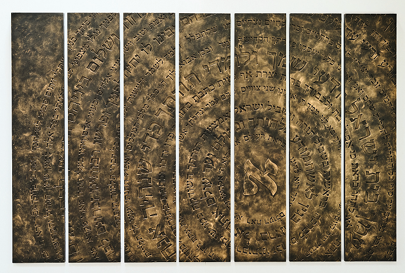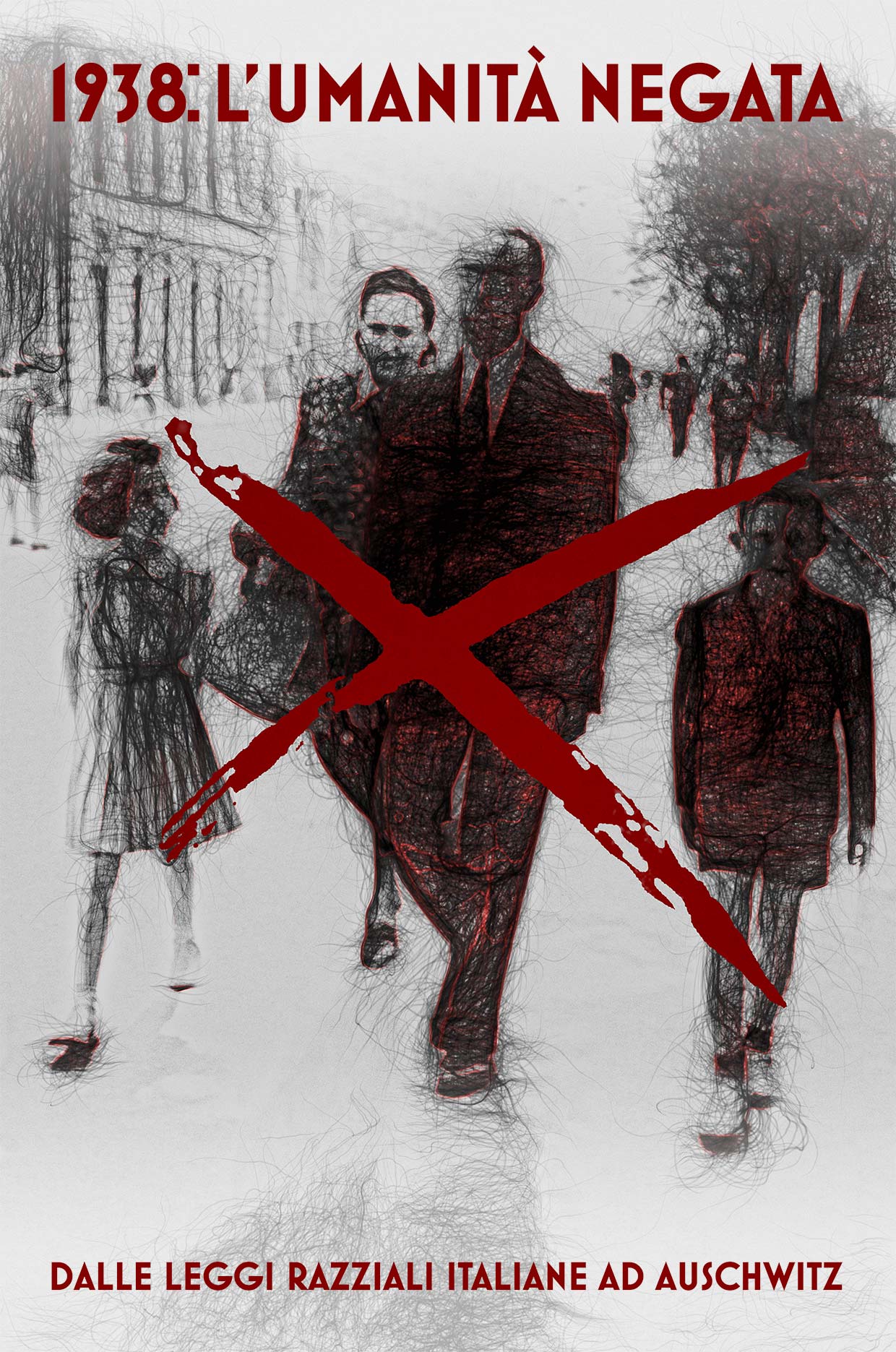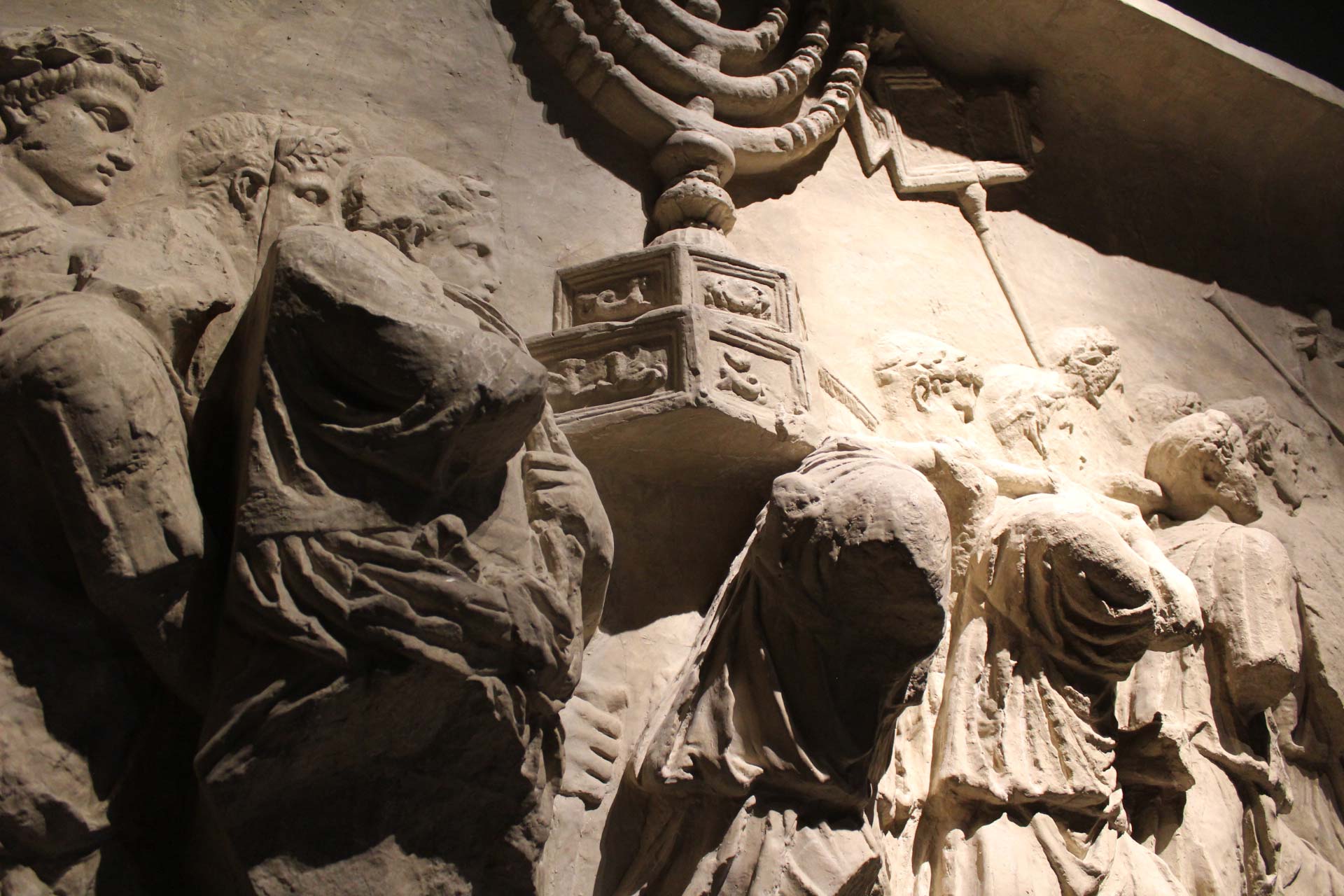
Opening Italy’s ‘Closet of Shame’

By Saviona Mane
MILAN, Italy – Hidden in the guts of Stazione Centrale, Milan’s impressive train station, which was inaugurated during the fascist era and now serves 120 million railway passengers per year, is the point where fascist Italy converges with Nazi Germany: Platform 21. This is the platform where postal items were loaded onto freight trains, heading to their destinations around Europe. This is also where Jews, and non-Jewish dissidents, were loaded onto cattle cars heading to their destinations around Europe: the camps of Fossoli, Bolzano, Mathausen, Bergen-Belsen, Ravensbruck, Flossenbürg and Auschwitz-Birkenau. Twenty such transports that left for the concentration and death camps, from December 1943 to January 1945, while on the upper floor passenger trains continued to rush toward European cities.
Platform 21 was transformed into a Holocaust memorial in 2013. In its heart, a few of the original cars are standing along a short track, which ends in an exposed space, from which the train cars with their human cargo were brought up to the station level. Out of sight. At the entrance to the memorial – above which the rumbling of trains coming in and out make one shiver– a huge inscription reading “Indifference” greets visitors.
“Indifference is worse than violence,” says Liliana Segre, an 88-year-old Holocaust survivor and a newly appointed senator, who insisted on inscribing that word on the huge stone.
Segre was one of 25 Jewish children under the age of 14, out of a total of 776, who were deported from Italy to Auschwitz and survived. She was 13 when she boarded a train that departed from Platform 21 for Auschwitz on January 30, 1944 with her father. But for her and over 7,500 other Italian Jews deported to the death camps, the journey to hell had begun many years before, on November 17, 1938, when Benito Mussolini’s Racial Laws against Jews went into effect. Eighty years ago this week.
>> How a Jewish historian helped Benigni fend off Holocaust denial charges in ‘Life is Beautiful’
The racist laws had been preceded by publication of the “Manifesto of Race,” which was signed by 10 senior scientists in July 1938, purporting to give it a scientific basis. Signed without hesitation by King Vittorio Emanuele III, the statutes were meant to ban Jews from society and humiliated them. They included a series of prohibitions that became increasingly rigid, up through the spring of 1945. They ranged from bans on intermarriage, schooling in public institutions, working in state entities, membership in the Fascist Party, and participation in the “free” professions, to prohibitions on ownership of real estate above a certain value, renting out rooms to non-Jews, peddling and trading in wool, to forbidding involvement in the realms of music, theater, acrobatics, management of dance studios, along with owning radios, being listed in the phone books, publishing death notices and raising carrier pigeons.
The sky fell on about 50,000 Italian Jews, the oldest Jewish community in Europe, about 10 percent of whom were registered in 1933 with the Fascist Party. All of a sudden, well-established, patriotic families with deep roots in the country, who saw themselves as Italian in every respect – some of whom had even lived there for hundreds of years, like Segre’s forebears – were stripped of all civil rights. In the fall of 1943, along with the invasion of German forces and the establishment of the Italian Socialist Republic of Salo, came the physical persecution as well.
Segre, who was born in Milan in September 1930 was 8 years old when the Laws were enacted. “A very happy, serene, slightly naughty little girl, upon whom my father and grandparents heaped endless love,” says Segre, who lost her mother at a tender age.
“I grew up in a secular, you could say atheist family, in which there were no religious symbols and which did not celebrate (Jewish) holidays,” she recently told Haaretz during an interview in her Milan home, where a Hanukkah menorah stands out today, adding, “I wasn’t even aware that I was Jewish.”
>> ‘I will sue anyone offending Mussolini’: Granddaughter of Italian fascist sparks online war
The revelation of her Jewish identity caught her by surprise: On the day her father informed her that she had been expelled from school – the very same school that her children and grandchildren would later attend.
“This word, ‘expelled,’ was a terrible word in my eyes,” says Segre, a tall, elegant woman who speaks gently, with restrained intensity, devoid of pathos. “I didn’t understand why. I didn’t understand what I’d done wrong.”
For the first time in her life, the mischievous and happy girl felt “different” from her friends, most of which faded slowly out of her life. Even her beloved teacher did not seek to comfort or embrace her when Segre was expelled, and made do with a comment about not having been the one that legislated the racist laws. A pervasive feeling of abandonment and loneliness grew in her family, which could not find comfort in the local Jewish community, with whom they did not have ties.
“Some Jews understood what was happening and left Italy, some understood but lacked the means to leave, and others, like my family, didn’t want to leave because they didn’t believe what had happened could ever happen, and stayed until it was too late,” Segre recalls.
>> Soros comments to Haaretz get Italy’s state media chief sued in political storm
Indeed, when she and her father Alberto tried to escape to Switzerland on December, 1943 – after believing they had secured the grandparents’ safety – it was already too late. Swiss border police sent them back to Italy, whereupon they were arrested, sent to San Vittore prison in Milan and were then, after 40 days, loaded onto a cattle car destined for Auschwitz. Alberto and his own parents, who were subsequently arrested, were murdered in the death camp. Liliana, who looked older than her 13 years, was sent to forced labor in a weapons factory nearby, and survived.
“You only survive by chance in Auschwitz, by luck, not because you are clever or smarter,” she says. “But you can never escape from Auschwitz, as Primo Levi said.”
The persecution of Italian Jews increased gradually. Six years before the Racial Laws, Il Duce claimed in an interview with a Swiss Jewish journalist, Emil Ludwig, that there was no anti-Semitism in Italy, and even praised the Jews. “As citizens, Italian Jews have always behaved properly, and as soldiers they fought bravely,” he said.
Until establishment of Mussolini’s Salo Republic and the Nazi invasion, in autumn 1943, the fascist racist laws did not threaten the lives of Italy’s Jews.
Driven by love of power
“Mussolini was an anti-Semite ‘inside,’ but not an unbridled one like Hitler,” Michele Sarfatti, an Italian historian who specializes in Jewish history under fascist rule, tells Haaretz in an interview in his home in Milano.
“He was a pragmatic leader. On the one hand, he could write articles tinged with anti-Semitism and attack the ‘racist fraternity between Bolshevik Jews in Russia, liberal Jews in London and capitalist Jews in New York’ – a classic anti-Semitic speech. On the other hand, he had no problem conducting close relations with Jews like [journalist and socialist politician] Claudio Trevesor or Margherita Sarfatti,” Mussolini’s lover of 20 years, who shared his fascist ideology and wrote his first official biography, “Dux.”
“It is true that until his regime was solidly established, Mussolini was not reluctant to use violence or to allow fascist bullies’ attacks on the streets, but after 1925 he wasn’t interested in street violence as was prevalent in Germany. With few exceptions, there was no burning books or Kristallnacht in Italy,” says Sarfatti. “Under the new fascist order, oppressing Jews and opponents of the regime was supposed to be done by the police, without killing, without establishing violent camps like Dachau.”
The situation changed drastically on September 8, 1943, a month-and-a-half after Mussolini was deposed and incarcerated, on the very day the new government announced the signing of an armistice between Italy and the Allies, and the very day the Italians found out that their king and prime minister had deserted them and fled to territories held under Allied control. Within days, Nazi forces entered the beleaguered country, released Mussolini from jail, installed him as the head of a puppet state in northern Italy – the Socialist Republic of Salo – and embarked on implementing the Final Solution.
According to Sarfatti, nearly 7,500 Jews out of some 50,000 were deported to death camps between September 1943 and Italy’s liberation in April 1945. Over 5,900 of them were exterminated, over 800 survived, and another 300 were murdered on Italian territory.
“He exchanged the lives of Italy’s Jews for Nazi support for his regime. After his release from jail, he could have said ‘enough, I’m old and tired’ – without the Nazis executing him – but his hunger for power was so strong that he was ready to sacrifice not only Italy’s Jews, but also the regions of Trento and Trieste for it,” says Sarfatti.
The historian adds that Mussolini “had known since 1942, perhaps without all the details, about the camps, about the acts of mass slaughter in the Soviet Union, about the use of gas. As one who used gas himself in the conquest of Ethiopia, he knew very well what the use of gas meant.”
In the fall of 1945, at age 15, Segre returned home to Milano – after almost a year in Auschwitz, the death march to Germany, and four months in a DP camp where, she recalls, she ate “day and night” and gained 10 kilos every month. Upon her return, her maternal grandparents, who had found refuge in a convent in Rome, were granted custody of her.
“They saw a fat, clumsy, ugly, difficult, wounded, grumbling girl,” she says. “It was hard for them, and I wanted them to accept me as I was …. They were good people, they loved me, and I loved them, but I wanted to live with Susanna, the maid who had lived in our home 47 years and loved all of us deeply. She had saved the family pictures and my grandmother’s jewelry for me. Upon her death, she left her money to a priest to pray for us for 10 years.”
Slowly, Segre began to readjust to daily life, studies and love. In 1951 she married Alfredo Belli Paci, a Catholic who was sent, along with some 600,000 other Italians, to a concentration camp for refusing to serve the Republic of Salo.
“He understood me when he saw the tattoo on my arm,” she once said in an interview. “He wasn’t shocked. He didn’t flee.”
With him she raised their three children and was by his side until he died 10 years ago.
“We met on the beach. We fell in love within days. It was a beautiful love,” she says softly.
‘Too tragic’
Like many Holocaust survivors, Segre kept silent for many years. “There were no words, it was too powerful, too tragic. We didn’t want to talk, and they didn’t want to listen.”
At 60, after the birth of her grandchildren, she felt that she had to pass her personal testimony on to the next generations. Since then, she has visited schools across Italy telling her story and the story of Italian Jewry.
“None of us will be left in 10 years, and the Holocaust will become a line in history books, and later not even that,” she says.
Segre’s appointment last January by President Sergio Mattarella as senator for life (“I am aware of age limitations,” she says smiling) gave her immediate media exposure, and essentially turned her into a living, breathing symbol of a period that Italy has repressed for 80 years. A repression historian Anna Foa has called “collective amnesia.”
“Italy never opened its closet of shame,” says Segre. “After the war, suddenly there were no fascists. Everyone suddenly became Christian Democrats, Communists … but Italy was fascist, just like Germany was Nazi. The people were deeply in love with these theories.”
After the liberation of Italy in April 1945 by Allied troops and the subsequent introduction of a general amnesty, “the state acted like racism and anti-Semitism had never been here,” says historian Sarfatti. “Everything was forgotten.”
“Besides a few senior leaders who were tried and executed, no one was forced to do soul-searching or to answer for his part in the fascist regime. Everyone returned to the fold, sometimes to the exact same role,” he adds.
Gad Luzzatto Voghera, a historian and lecturer at Sapienza University of Rome, and director of the Foundation Jewish Contemporary Documentation Center, agrees that Italy hasn’t done any soul-searching about its fascist past. He attributes this mainly to the desire and need to unify and rebuild the defeated, destroyed and divided country, where fascists and communists continued their reciprocal campaigns of revenge and murder through mid-1945.
“The rebuilding of Italy being the country’s top priority, all the anti-fascist groups decided to stop the civil war and to start a ‘soft’ transition to democracy,” Luzzatto Vagera tells Haaretz. “However, in order to do this they had to reactivate all state institutions – the civil service, the army, the police, the court system, the schools – that had been shaped and manned for 20 years by the fascist regime, most of whose members were diehards.”
Under such conditions, he adds, “Italy was incapable of, nor did it want to engage in any profound reckoning. Even today, from a distance of 80 years, it remains very hard.”
But it seems that in recent years something has started to change. In 2000 the parliament declared the date of the liberation of Auschwitz, January 27, as Holocaust Memorial Day. In 2003, it unanimously approved a law to establish a National Museum of Italian Judaism and the Shoah in Ferrara; it opened in 2017. In 2013, Platform 21, which was for years consigned to oblivion in the national consciousness together with the Racial Laws, was converted into a Holocaust memorial. In 2014, the City of Rome gave the green light to build a Holocaust museum in Il Duce’s official residence, Villa Torlonia.
Last year, the laws were among the subjects included, for the first time, in matriculation exams. This year, which marks the 80th anniversary of the enactment of the anti-Semitic legislation, the media has been addressing the topic nonstop, drawing a direct correlation between the laws and the Holocaust. There is almost no newspaper or current events program that doesn’t discuss these subject, that don’t seek an interview with Senator Segre or one of the few remaining survivors.
“I’ve already heard some complaints of an ‘overdose,’” Segre says. “People tell me, ‘Enough with the 80 years.’ On the one hand, it’s positive. On the other, many are sick of it by now. We are indeed a tiny minority. People think we are a million, or a million and a half, but we’re barely 40,000” out of a total population of more than 60 million.
Besides the widespread media coverage, 90 universities around Italy this year issued a first-ever apology for their part in expelling thousands of Jewish students, lecturers and employees from their institutions in order to comply with the Racial Laws. Sarfatti does not applaud this initiative.
“Apology creates pathos in society, and that’s okay, but it must be accompanied by practical steps, with research grants, relevant school curricula [studying the Racial Laws isn’t mandatory], restoration of Jewish names that were replaced by fascist names,” he says. “In the medical department of the University of Bari, for example, there is an auditorium named for Nicola Pende, one of the 10 signatories on the scientists’ manifesto. Let them remove his name before they apologize.”
Sarfatti estimates that 10 to 15 percent of Italians are what he calls people “who don’t do anti-Semitism” – but he is worried by the racist winds blowing through the country, ruled by a government in which a far-right party sits.
“There is an iron pact between racism and anti-Semitism,” he says. “Racism has already ‘gotten clearance,’ and I don’t know what will happen if anti-Semitism does as well”
This year, after her senatorial appointment, Segre warned against the plan by Interior Minister Matteo Salvini to conduct a census of the Roma and Sinti in Italy, noting that a similar move was the first step in implementing the racist laws against the Jews and their deportation to camps, eight decades ago. She says she is trying to advance two legislative initiatives in her new role – one against hate speech and another that would require high-school classes studying the 20th century to learn about all crimes of genocide crimes including, she notes, those involving “the Armenians, Stalin’s purges, the Holocaust, the Tutsi, Cambodia and Yugoslavia….”
Segre is careful with her terminology. She speaks of “Italians of the Jewish faith,” not of “Italian Jews”; of “racist laws,” not “Racial Laws.” She says she doesn’t really see the parallels between the fascist era and the situation existing in her country today, “even if we have one guy who says things belonging to the realm of fascism.” It’s a different period, she observes: “People already have their idols – singers, soccer players, bloggers. Who among the young people would be willing to die for Italy?”
Despite the racist laws, despite the murder of her family, despite Auschwitz, Liliana Segre, who lives not far from Platform 21 and the jail where she was held for 40 days at age 13, says today that she doesn’t feel betrayed by Italy and the Italians.
“Were the French (Jews) betrayed by France? The Germans by Germany? The Poles by Poland?” she says. “Who can we exonerate of this inborn anti-Semitism?”
Altri contenuti

Dimore di luce

29 gennaio, Processo a Priebke. 30 anni dopo

Italia Ebraica nel mondo, 11 dicembre

Scatti di Storia, 4 dicembre



